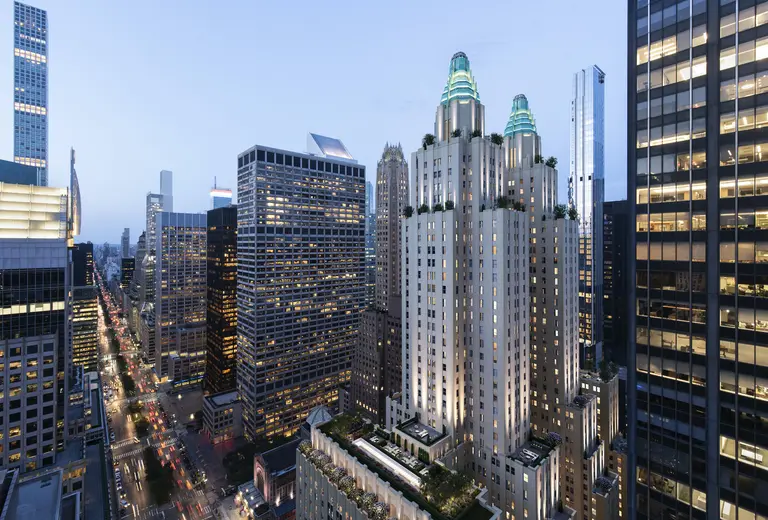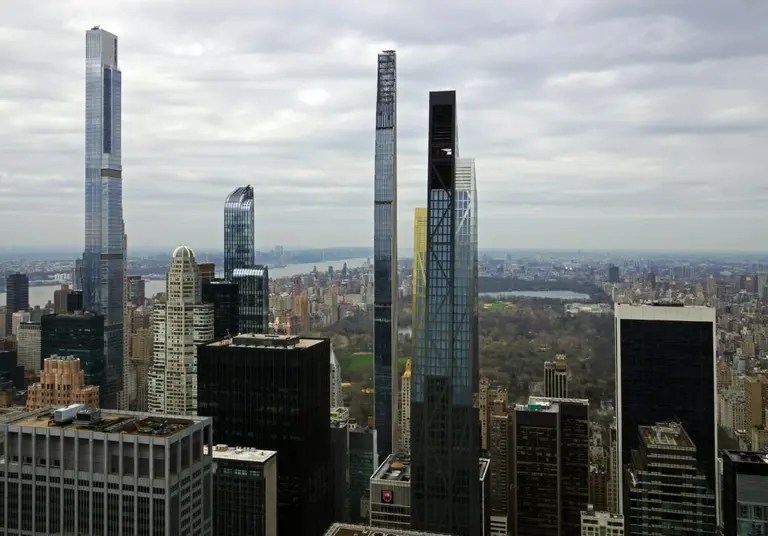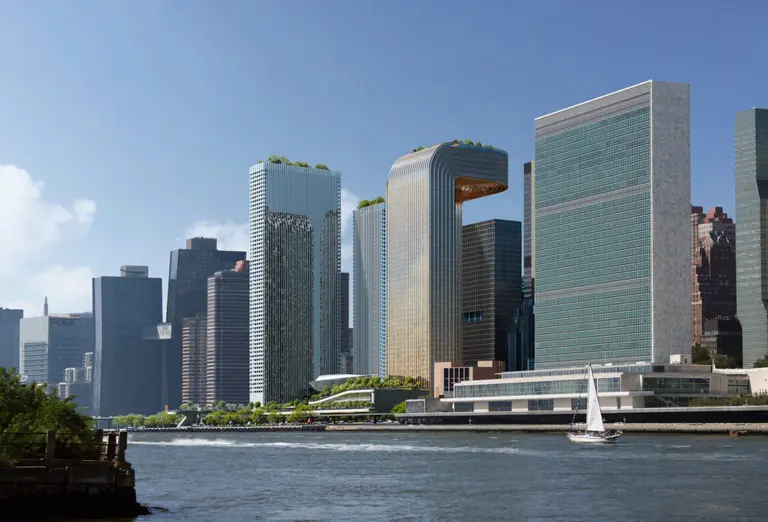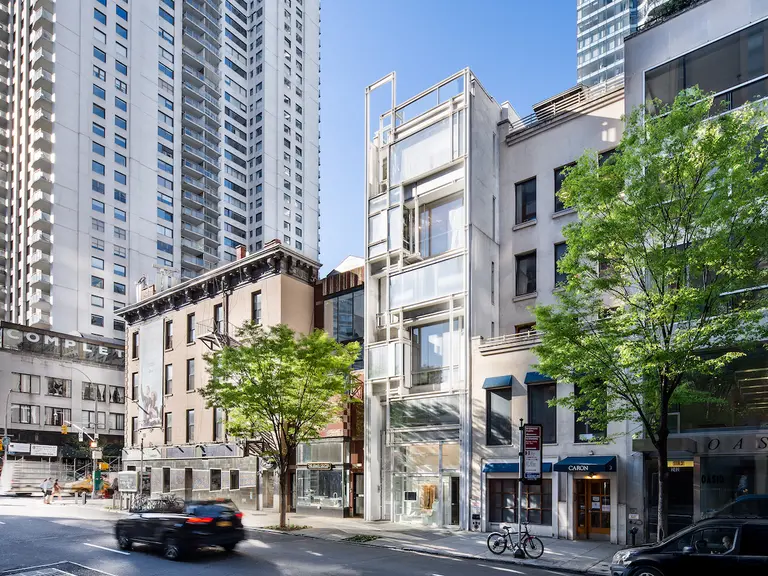City releases Midtown East Rezoning plan; could add 16 new towers
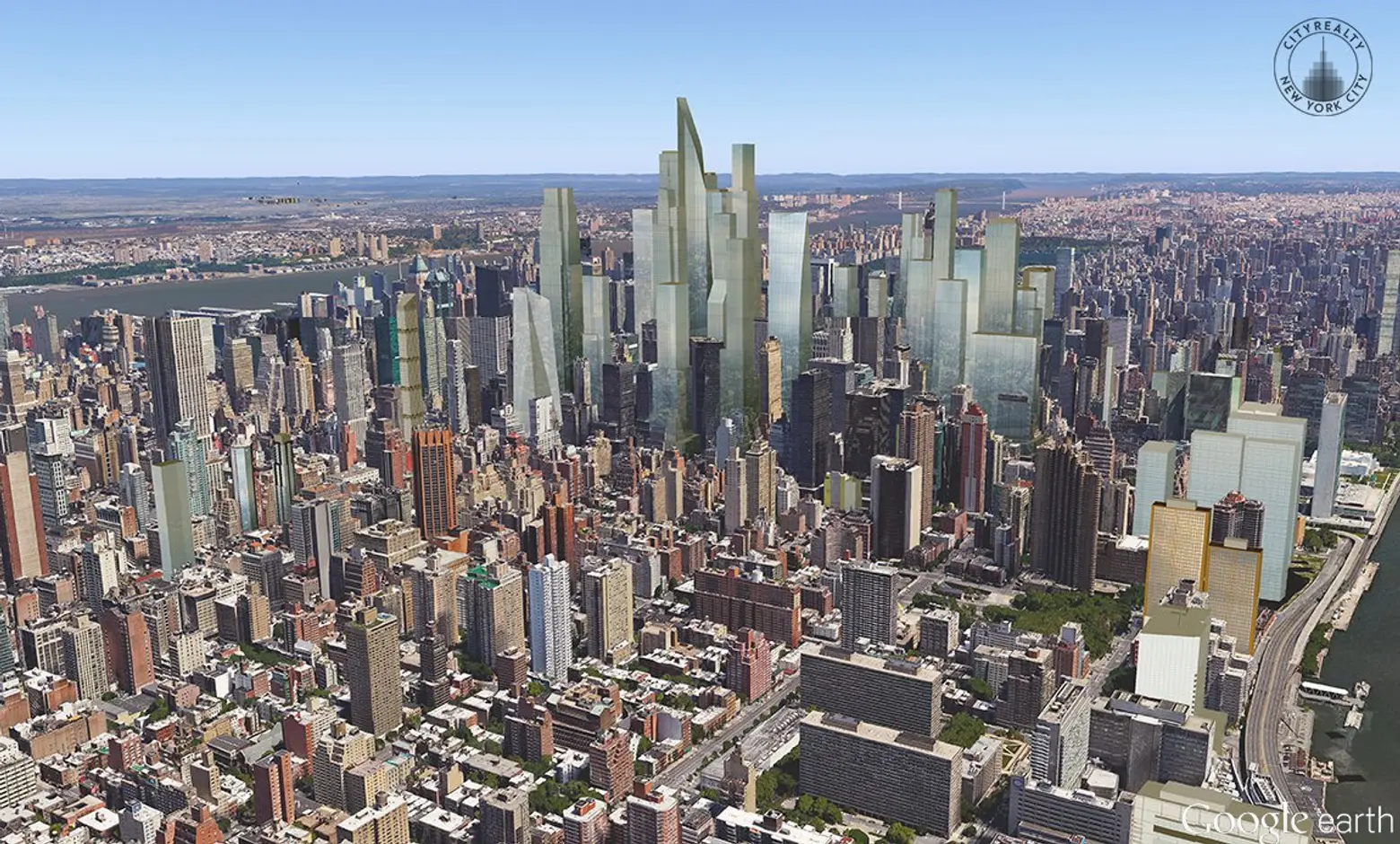
Conceptual image depicting all the proposed sites of the East Midtown rezoning fully built out. Courtesy CityRealty
After Mayor Bloomberg’s failed 2013 attempt, the city has released its long-awaited Midtown East Rezoning plan, a controversial upzoning of the area bound by Madison and Third Avenues and 39th and 50th Streets, which would encourage taller, more modern office towers in an area that many feel is no longer attracting commercial tenants.
According to Crain’s, their proposal, the first step in the formal rezoning process, would allow the tallest buildings around Grand Central, increasing the maximum density by 30 percent. Along Park Avenue and near subway stations north of the Terminal, density would be increased, too. The proposal also will permit owners of landmarked buildings to sell their air rights across the district, rather than just to adjacent properties like the current law dictates.
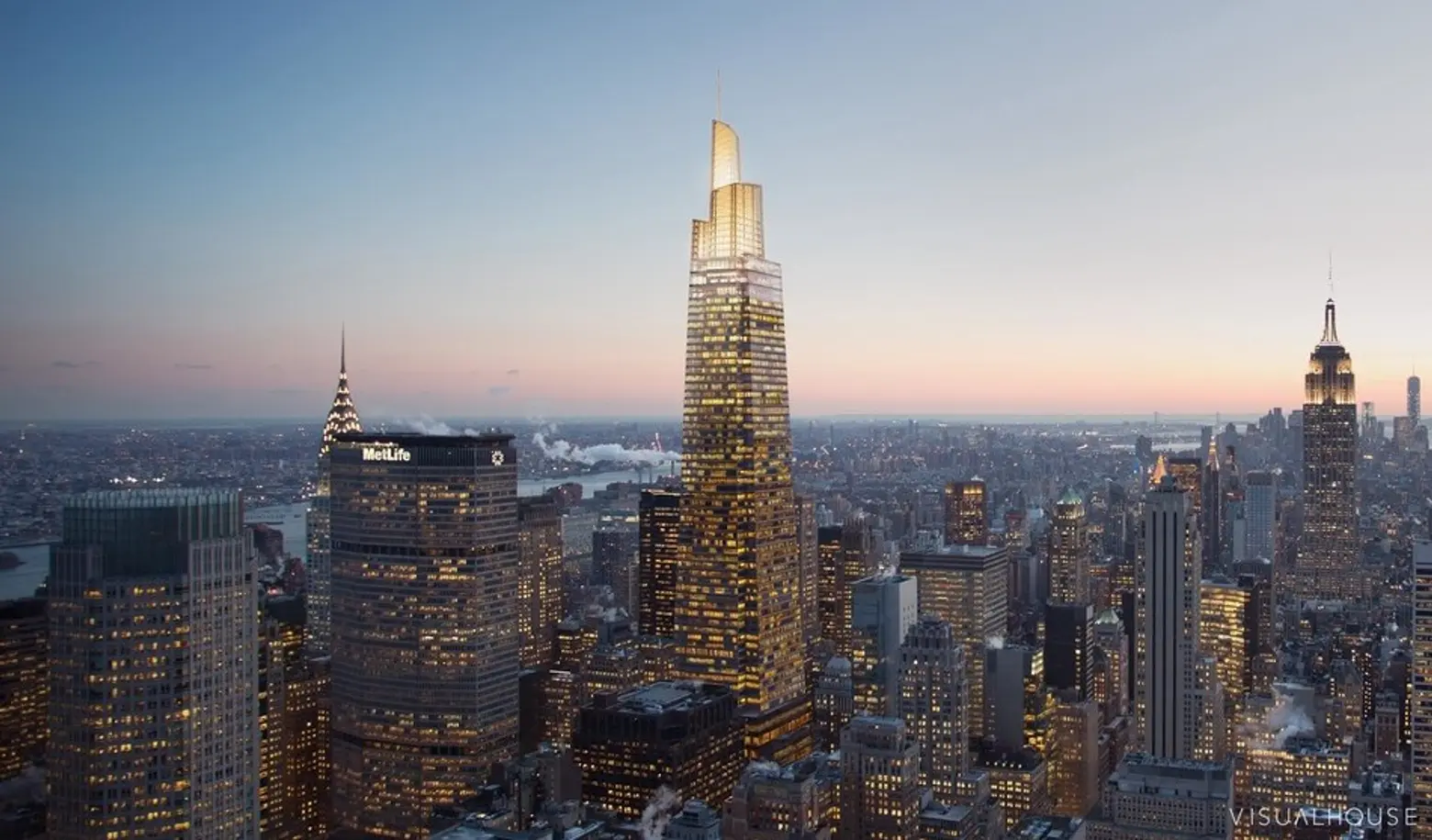
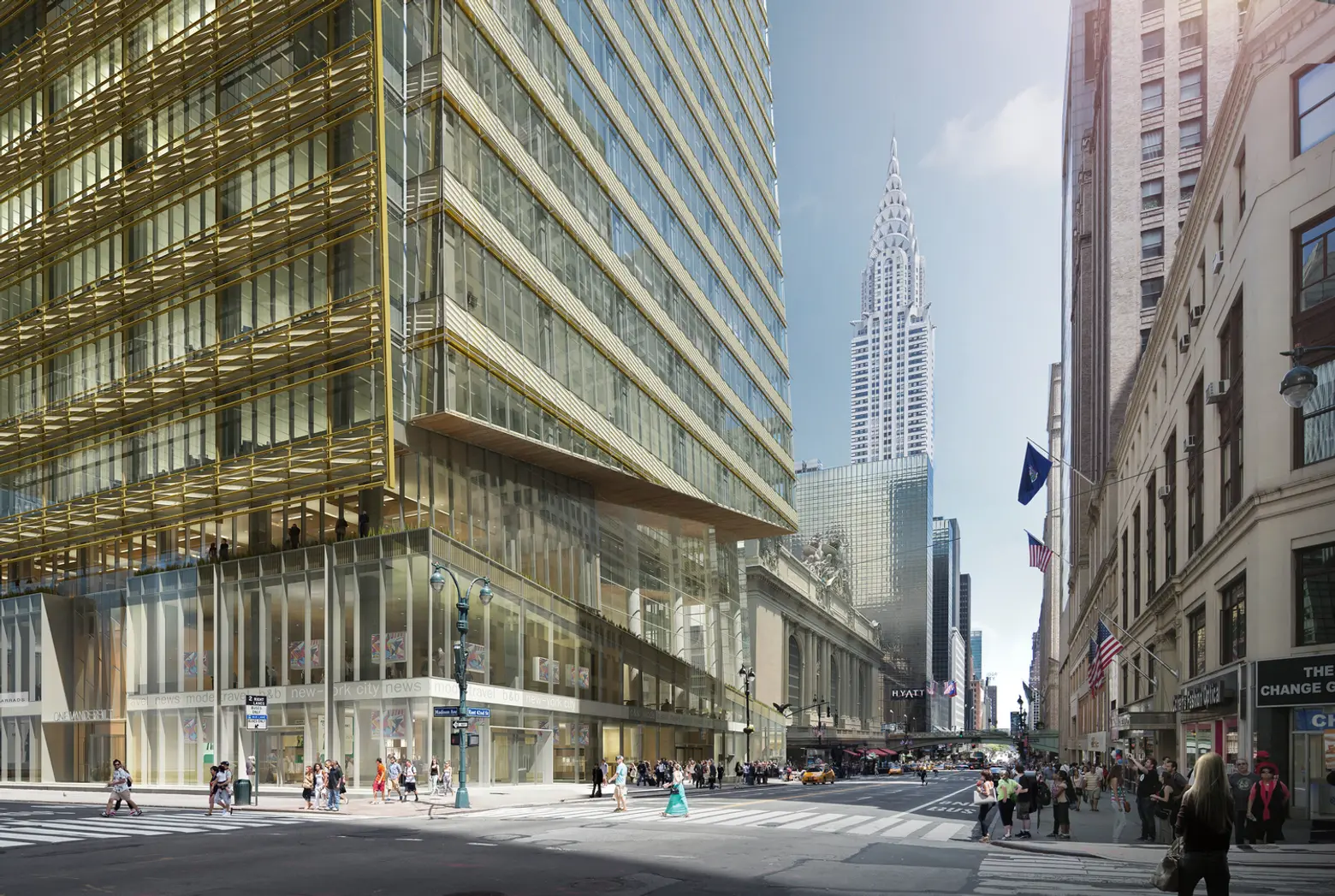 Renderings of One Vanderbilt
Renderings of One Vanderbilt
One Vanderbilt, the area’s future tallest tower that will rise 1,401 feet, is the first component of the rezoning. Just this month, a $1.1 billion lawsuit against the tower was settled, giving the green light for construction to proceed. The tower is able to rise to this height because it took advantage of air rights transfers from around the Grand Central area, and it received zoning bonuses for providing $210 million in upgrades for Grand Central’s subway station. The same stipulation will hold true for other developers who want to achieve maximum allowable densities; they’ll need to either purchase air rights from landmarks in the area or make financial contributions to improving nearby transit infrastructure.
With all of this in mind, the city predicts the rezoning would yield 16 new towers in the area, amounting to an additional 6.6 million square feet of office space and 26,507 employees. Midtown East currently has 70 million square feet of office space, but less than five percent of this was built in the past 20 years.
The city’s planning documents, which can be viewed here, “will then be used to study the potential effects of the rezoning on the surrounding environment.” They’ll be discussed at a public meeting on September 22nd.
[Via Crain’s]
RELATED:











